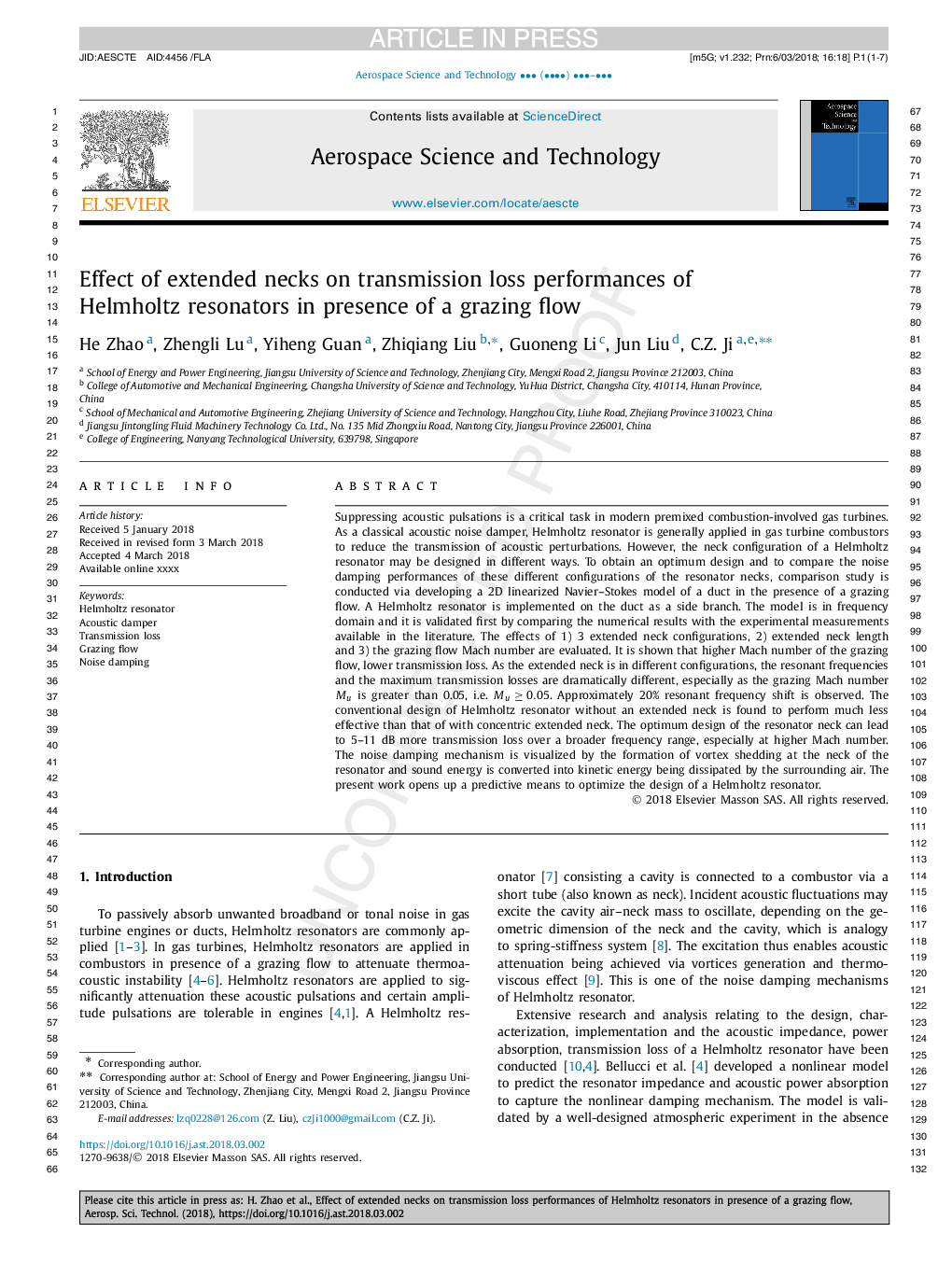| Article ID | Journal | Published Year | Pages | File Type |
|---|---|---|---|---|
| 8057647 | Aerospace Science and Technology | 2018 | 7 Pages |
Abstract
Suppressing acoustic pulsations is a critical task in modern premixed combustion-involved gas turbines. As a classical acoustic noise damper, Helmholtz resonator is generally applied in gas turbine combustors to reduce the transmission of acoustic perturbations. However, the neck configuration of a Helmholtz resonator may be designed in different ways. To obtain an optimum design and to compare the noise damping performances of these different configurations of the resonator necks, comparison study is conducted via developing a 2D linearized Navier-Stokes model of a duct in the presence of a grazing flow. A Helmholtz resonator is implemented on the duct as a side branch. The model is in frequency domain and it is validated first by comparing the numerical results with the experimental measurements available in the literature. The effects of 1) 3 extended neck configurations, 2) extended neck length and 3) the grazing flow Mach number are evaluated. It is shown that higher Mach number of the grazing flow, lower transmission loss. As the extended neck is in different configurations, the resonant frequencies and the maximum transmission losses are dramatically different, especially as the grazing Mach number Mu is greater than 0.05, i.e. Muâ¥0.05. Approximately 20% resonant frequency shift is observed. The conventional design of Helmholtz resonator without an extended neck is found to perform much less effective than that of with concentric extended neck. The optimum design of the resonator neck can lead to 5-11 dB more transmission loss over a broader frequency range, especially at higher Mach number. The noise damping mechanism is visualized by the formation of vortex shedding at the neck of the resonator and sound energy is converted into kinetic energy being dissipated by the surrounding air. The present work opens up a predictive means to optimize the design of a Helmholtz resonator.
Related Topics
Physical Sciences and Engineering
Engineering
Aerospace Engineering
Authors
He Zhao, Zhengli Lu, Yiheng Guan, Zhiqiang Liu, Guoneng Li, Jun Liu, C.Z. Ji,
